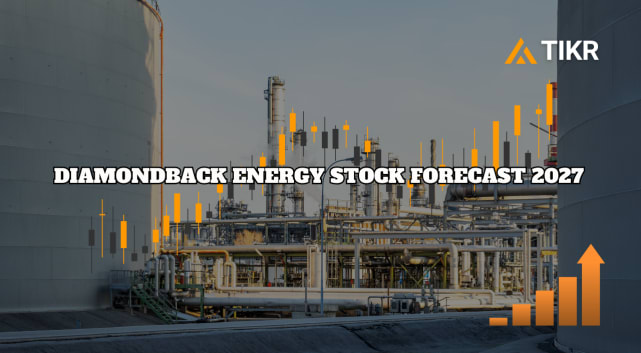National Australia Bank (NAB) is Australia’s largest business bank, playing a foundational role in the nation’s financial services and economy. The bank’s core purpose is to support its clients to achieve financial health through a focus on business banking, home lending, and proprietary wealth solutions across its domestic and international footprint.
This leadership position in the business sector provides a stable and deep source of revenue that underpins the bank’s operational resilience.
Find out what a stock’s really worth in under 60 seconds with TIKR’s new Valuation Model (It’s free)>>>

The full year 2025 demonstrated a very resilient financial performance, highlighted by stable cash earnings despite persistent global and domestic headwinds. The bank successfully executed the first year of its refreshed strategy, focusing keenly on growth pillars while maintaining a consistently prudent balance sheet. This ongoing digital and strategic investment positions NAB to achieve relative market outperformance heading into 2026.
Quickly value any stock with TIKR’s powerful new Valuation Model (It’s free!) >>>
Financial Story
NAB delivered stable cash earnings for the full year 2025 of 7.91 billion Australian dollars (down 0.2% from the prior year). This stable result was achieved despite a challenging environment, highlighting the bank’s underlying strength and diversification in its core businesses. The bank achieved an underlying profit lift of 1%, primarily driven by strong momentum in the second half of the year.
| Metric | FY 2025 Outcome | Comparison to FY 2024 | Notes |
| Cash Earnings | 7.091 billion AUD | Down 0.2% | Stable performance against global and domestic headwinds. |
| Underlying Profit | Up 1% | Up 1% | Fueled by strong momentum in the second half. |
| Deposit Balances | Up 7% | Up 7% | Strong growth secured a stable, core funding source. |
| CET1 Ratio | 11.7% | N/A | Maintained prudent balance sheet settings. |
| Revenue Growth (CAGR, Forecast) | 2.6% | N/A | Forecasted mid-case revenue growth. |
| Forecast IRR (Annualized Return) | 4.4% | N/A | Forecasted mid-case annualized return over 4.4 years. |
The core financial story focused on margin and cost discipline. Deposit balances grew by a strong 7% over the year, reinforcing a critical, stable funding source and demonstrating the bank’s effectiveness in client focus. While credit impairment charges increased over the year, key asset quality outcomes improved during the second half, consistent with a supportive Australian economic environment.
Capital strength is key to maintaining resilience. The bank’s Common Equity Tier 1 (CET1) ratio held firm at 11.7%. This prudent balance sheet setting provides a buffer against elevated global risk and supports continued investment in technology. The bank maintained its commitment to shareholder returns by announcing a fully franked final dividend of 85 cents per share.
Look up National Australia Bank’s full financial results & estimates (It’s free)>>>
Broader Market Context
The Australian economic environment remains supportive, driven by a strong jobs market and steady consumer spending, which forms the core backdrop for NAB’s lending and deposit businesses. This stable economic environment is critical for managing potential headwinds arising from slower global trade and inflation. The bank continues to navigate a mixed scenario characterized by both economic resilience and elevated credit risk across its asset classes.
However, the banking sector faces increased complexity due to sustained inflation and higher interest rates, which directly affect lending margins and lead to higher credit impairment charges. Global macroeconomic uncertainty, including ongoing geopolitical tensions, heightens the risk environment for Australian banks. This requires NAB to maintain constant vigilance and prudent financial planning, especially concerning its credit portfolio.
1. Leading the Growth in Business Banking
NAB’s core identity as Australia’s largest business bank dictates its primary strategic focus, enabling it to leverage its market position to build deeper client relationships. The bank successfully delivered on its priority of growing business banking, significantly outpacing the overall market in terms of net loan growth. This execution relies heavily on engaged frontline bankers who are key to capturing and servicing the profitable small-to-medium enterprise segment. Growing market share in this key, highly profitable segment is vital to achieving sustainable revenue and maintaining the bank’s leading domestic position.
This focus allows NAB to achieve better pricing power and lower credit risk within the business segment. The strong performance demonstrates the effectiveness of their relationship-based banking model, which contrasts with that of transactional competitors. Furthermore, continuous investment in specialized digital tools for business clients enhances efficiency and service quality. This strategy ensures long-term customer loyalty and deeper product penetration across the entire client base.
2. Disciplined Deposit Strategy and Funding
The bank achieved a 7% increase in deposit balances over the whole year, a strong outcome that reinforces its critical, stable funding profile. This outstanding growth in deposits is a direct consequence of a deliberate strategy to secure low-cost, sticky funding from both retail and business clients. By emphasizing deposit growth, NAB ensures its funding structure is resilient against volatility in wholesale funding markets. This success insulates the bank from external liquidity risks and enhances its net interest margin.
This disciplined funding approach strengthens the balance sheet and provides a highly profitable foundation for continued lending growth. NAB is consistently offering competitive rates and seamless digital access to retain and grow its core deposit franchise. Maintaining a low cost of funds is arguably one of the most vital levers for profitability in the current high-interest-rate environment. This focus positions NAB favorably against its peers by securing long-term financial flexibility.
Value stocks like National Australia Bank in less than 60 seconds with TIKR (It’s free) >>>
3. Technology-Enabled Solutions and Efficiency
NAB is committing to a targeted investment strategy, specifically channeling funds into technology-enabled solutions and digital capabilities. These investments are aimed at driving internal operational efficiency and significantly enhancing the overall client experience across all lines of business. The new digital solutions deliver simpler, faster, and safer outcomes for both clients and the bank’s operational teams. This efficiency drive is essential for controlling costs and supporting positive operating leverage into the next fiscal year.
This targeted investment is crucial for supporting new offerings, particularly in the proprietary home lending segment, where digital speed matters most. By upgrading its core digital capabilities, NAB aims to accelerate its service delivery and shorten cycle times across its entire lending process. The strategic goal is to sustain the positive operating leverage achieved in the second half and reduce the overall cost to serve into 2026. This forward-looking efficiency ensures that revenue growth directly translates into profit growth.
The TIKR Takeaway

NAB’s chart shows a strong 8.9% price return over the last 11 months, reflecting robust investor confidence. Adding to this is the TIKR Valuation Model, which projects a mid-case total return of 21.5% over 4.4 years, resulting in a gentle but solid 4.4% annualized IRR.
This model suggests that while Revenue Growth (CAGR) is forecast to remain stable at 2.6%, the real earnings power lies in the sustained Net Income Margin of 29%. For an analyst, TIKR illustrates that the stock is currently fairly valued, with its consistent performance and strategic growth in business banking already justifying the steady annualized return forecast. The investment thesis hinges on NAB’s ability to maintain its leading deposit franchise and execution efficiency.
Should You Buy, Sell, or Hold National Australia Bank Stock in 2025?
NAB demonstrated strong execution and remarkable stability across its Australian franchise, delivering stable cash earnings and a lift in underlying profit. The bank’s leadership in business banking and its strong deposit growth provide excellent strategic foundations.
From a valuation perspective, the stock is trading close to what its consistent fundamentals suggest. The strong market performance of the last year indicates the bank is efficiently priced. Therefore, until the bank signals a major acceleration of growth or margin expansion, investors should approach with caution.
How Much Upside Does National Australia Bank Stock Have From Here?
With TIKR’s new Valuation Model tool, you can estimate a stock’s potential share price in under a minute.
All it takes is three simple inputs:
- Revenue Growth
- Operating Margins
- Exit P/E Multiple
If you’re not sure what to enter, TIKR automatically fills in each input using analysts’ consensus estimates, giving you a quick, reliable starting point.
From there, TIKR calculates the potential share price and total returns under Bull, Base, and Bear scenarios so you can quickly see whether a stock looks undervalued or overvalued.
Find out what your favorite stocks are really worth (Free with TIKR) >>>
Looking for New Opportunities?
- See what stocks billionaire investors are buying so you can follow the smart money.
- Analyze stocks in as little as 5 minutes with TIKR’s all-in-one, easy-to-use platform.
- The more rocks you overturn… the more opportunities you’ll uncover. Search 100K+ global stocks, global top investor holdings, and more with TIKR.
Disclaimer:
Please note that the articles on TIKR are not intended to serve as investment or financial advice from TIKR or our content team, nor are they recommendations to buy or sell any stocks. We create our content based on TIKR Terminal’s investment data and analysts’ estimates. Our analysis might not include recent company news or important updates. TIKR has no position in any stocks mentioned. Thank you for reading, and happy investing!








